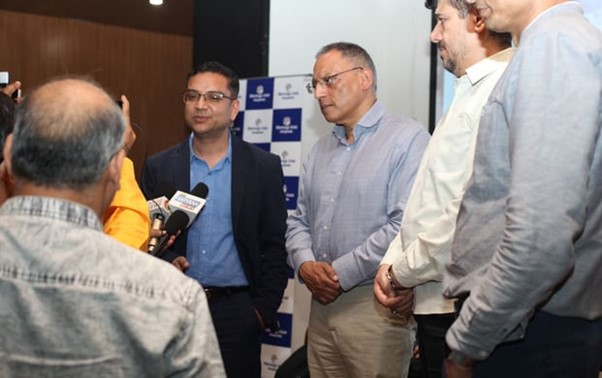WHAT IS LVAD?


Dr. Aditya Kumar Singh addressing Media after performing first LVAD Surgery in Haryana.
A Left Ventricular Assist Device (LVAD) is a life-saving medical device designed to help individuals with severe heart failure or other serious heart conditions. When the left ventricle of the heart becomes weak and is unable to effectively pump blood to the body's organs and tissues, an LVAD is implanted to support and augment its function. It is a mechanical pump that is surgically connected to the heart and the main artery, the aorta. By taking over the pumping function of the left ventricle, the LVAD assists in maintaining adequate blood flow throughout the body.
LVADs are often used in various clinical scenarios:
Bridge to Transplant: In some cases, patients with end-stage heart failure are placed on a waiting list for a heart transplant. An LVAD can serve as a bridge, supporting their heart function until a suitable donor heart becomes available.
Destination Therapy: For patients who are not eligible for a heart transplant, LVADs can serve as a long-term solution to improve heart function and enhance their quality of life.
Recovery Aid: In certain cases of acute heart failure or myocardial recovery, an LVAD can be used temporarily to support the heart while it heals.
LVADs come in various designs, but they all share the common goal of reducing the heart's workload and providing essential blood flow to the body. The device is powered by batteries that patients carry with them or through a connection to an external power source. Modern LVADs are equipped with sophisticated control systems that adjust the pump's speed based on the patient's needs and activity levels.
Living with an LVAD requires significant lifestyle adjustments. Patients need to attend regular medical appointments to monitor the device's performance and receive proper care. They must follow dietary restrictions, take medications as prescribed, and be cautious about certain physical activities to prevent damage to the LVAD or their health.
LVADs have transformed the treatment landscape for advanced heart failure, significantly improving survival rates and enhancing the quality of life for many patients. Ongoing research and advancements in LVAD technology continue to make this life-saving therapy even more effective and accessible, providing hope for individuals with severe heart conditions.